Master’s Programme Atmospheric and Cryospheric Sciences
You want to become an expert in atmospheric processes over mountainous terrain?
Students of the Master’s Degree Programme in Atmospheric Sciences study, model and observe the Earth’s atmosphere and its interactions with hydrosphere, biosphere, cryosphere and human activities.
In courses, labs and field work, students acquire a highly interdisciplinary set of tools and skills from the fields of physics, computer sciences, chemistry, mathematics, statistics and data science and measurement technologies.
Graduates are experts in atmospheric processes taking place over mountainous terrain.
Study code
UC 066 614
FAQ
Graduates possess highly specialized knowledge in the field of atmospheric and cryospheric sciences. They are able to integrate, transfer and implement scientific methods and knowledge at the intersections of other related nature sciences.
The Master’s Programme Atmospheric and Cryospheric Sciences provides an in-depth understanding of atmospheric processes and their interactions with land, oceans, ice and biosphere from the molecular to the global scale and from short-term phenomena such as turbulences and storms to long-term climate changes; with a focus on snow and ice, climate and global change, applied meteorology (environment, energy, glaciology), the application of advanced observation systems (satellite technology) for data assimilation and process modelling in the area of environment and forecasting, or the analysis of the significance of complex orography in the dynamics of atmospheric flows.
A special focus of the education in Innsbruck refers to mountain aspects. The entry requirement for the Master’s Programme Atmospheric and Cryospheric Sciences is a bachelor’s degree in a related field with basic skills in mathematics, physics, chemistry, and computer languages. Alongside a deeper comprehension of the basic knowledge acquired in the bachelor’s programme, students learn to independently apply scientific methods to the interpretation of weather maps, to prepare large-scale and local weather forecasts based on the comprehension of the workings of current operational forecasting models.
Besides providing technical expertise in the field of meteorology, the programme additionally teaches students to evaluate scientific topics of meteorology and atmospheric physics in an interdisciplinary context, and to autonomously apply them to new areas of study, incorporating the university’s research specialities.
The career fields for graduates of the master’s programme range from meteorological and hydrological services, weather consulting companies, avalanche warning services, environmental agencies, domestic and foreign research institutions and operational centres, to interdisciplinary areas of responsibility where meteorology plays a key role.
The Master’s Programme Atmospheric and Cryospheric Sciences prepares students for relevant doctoral studies as well as careers beyond the academic area in national and international research institutions.
Graduates tracking: Shows which occupational fields students enter after graduation
Doctoral Programmes
More offers
Faculty of Geo- and Atmospheric Sciences Examination Office Information for students with disabilities
Curriculum
From the field
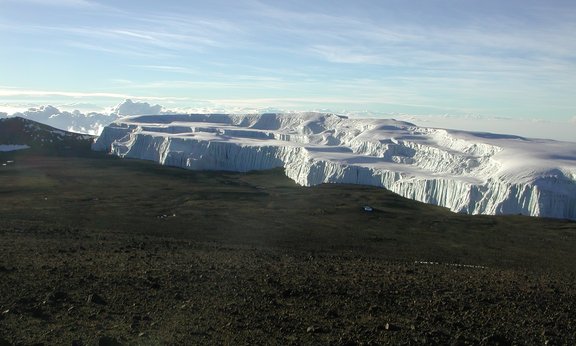
Afrikas Gletscher gehen stark zurück
Die wenigen Gletscher Afrikas schwinden einer Studie zufolge im Zuge der Klimakrise rasch – und könnten bis Mitte des Jahrhunderts verschwunden sein. Auf dem fast 6.000 Meter hohen Kilimandscharo in Tansania, dem etwa 5.300 Meter hohen Mount Kenia in Kenia und dem rund 5.100 Meter hohen Ruwenzori-Gebirge an der Grenze zwischen Uganda und der Demokratischen Republik Kongo haben sich die Eisflächen allein seit den ersten Jahren des 21. Jahrhunderts mehr als halbiert.
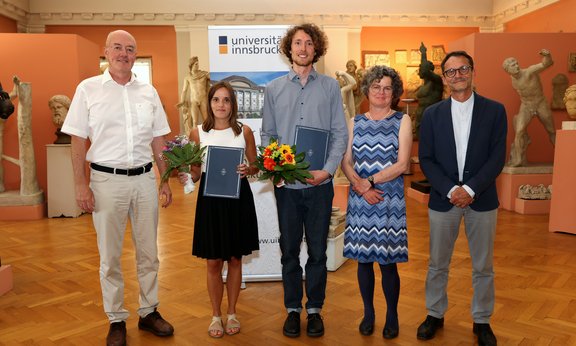
Beste Abschlussarbeiten gewürdigt
Am 20. Juni wurden im Archäologischen Museum bereits zum dritten Mal Preise für die besten Abschlussarbeiten an der Fakultät für Geo- und Atmosphärenwissenschaften verliehen. Für die beste Dissertation wurde die Atmosphärenforscherin Isabell Stucke, für die beste Masterarbeit der Geologe Simon Hinterwirth ausgezeichnet.
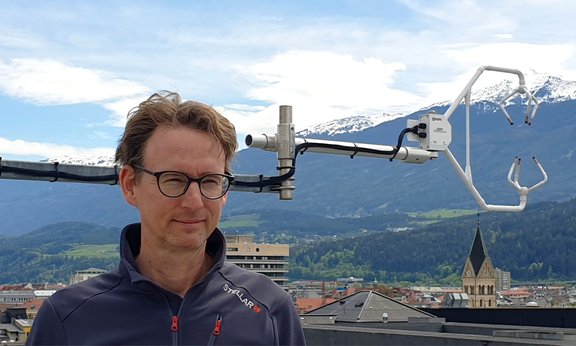
Luftgüte: Lehrmeinung muss revidiert werden
Langzeitmessungen im Stadtgebiet von Innsbruck zeigen, dass der Anteil von bodennahem Ozon in Atmosphärenmodellen tendenziell überschätzt wird. Als Konsequenz muss eine für die Luftgüteprognose grundlegende Lehrmeinung für den urbanen Raum neu interpretiert werden. Die Messungen eines internationalen Teams um den Atmosphärenforscher Thomas Karl belegen außerdem, dass direkte Stickstoffdioxid-Emissionen überbewertet werden.
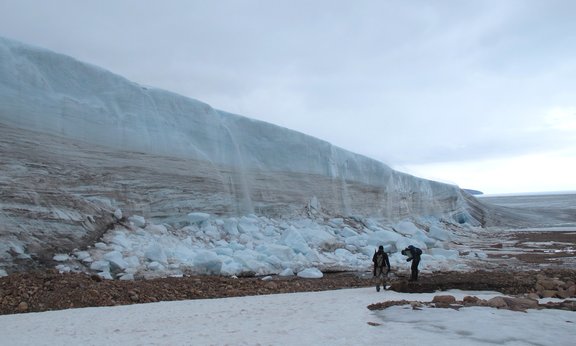
Grönlands Eiswände als Frühwarnsystem fürs Klima
Gletscher, die an Land durch senkrechte Eiswände begrenzt sind, sind rar. Diese Eiskliffe reagieren besonders sensibel auf Veränderungen von Umweltbedingungen. Forschungsteams aus Tirol und der Steiermark untersuchen die Eisformationen an einem Standort hoch im Norden Grönlands. Sie wollen anhand der Veränderungen der Gletscherwände Rückschlüsse auf die Entwicklung des arktischen Klimas ziehen.
Related studies
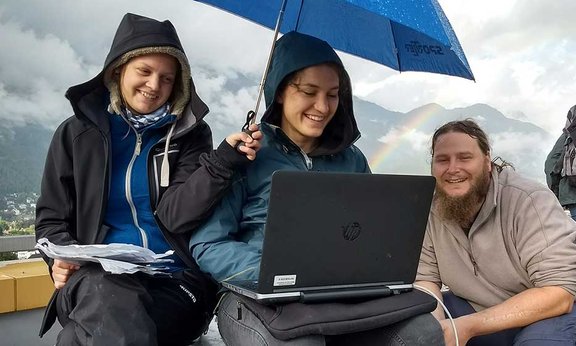
Atmospheric Sciences (Master)
Master of Science

Chemical Engineering (Master)
Diplom-Ingenieur*in


















